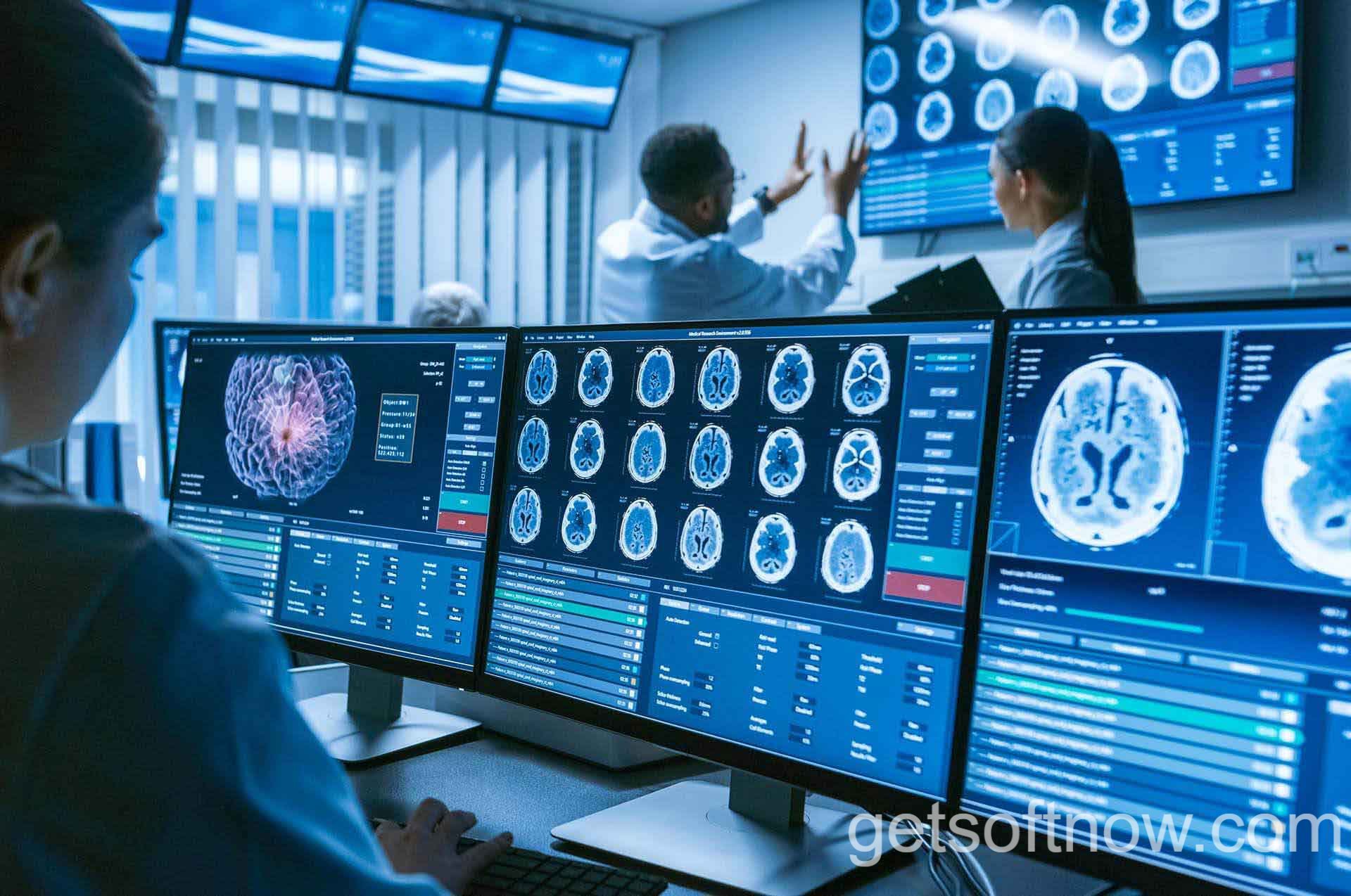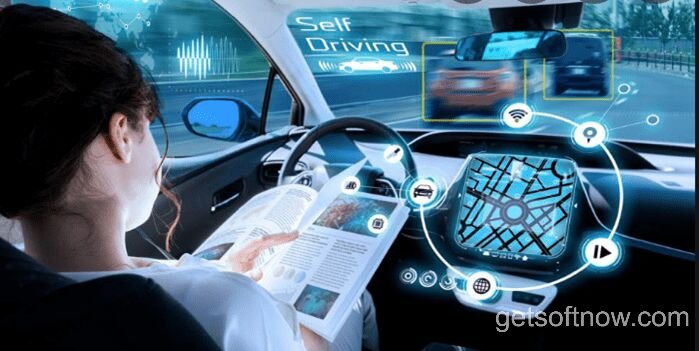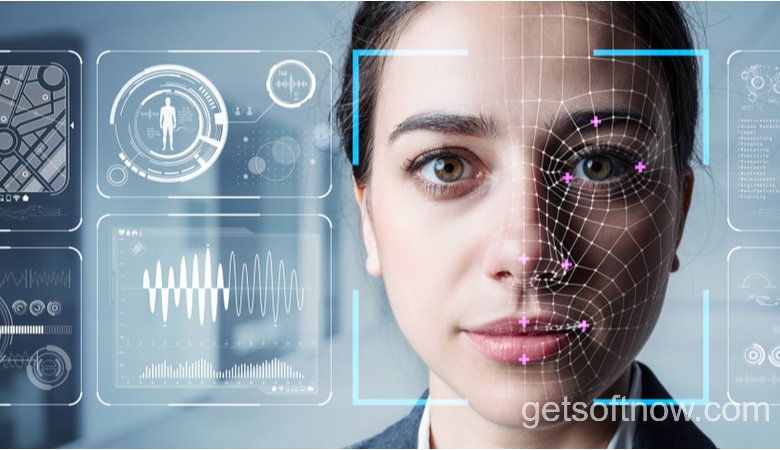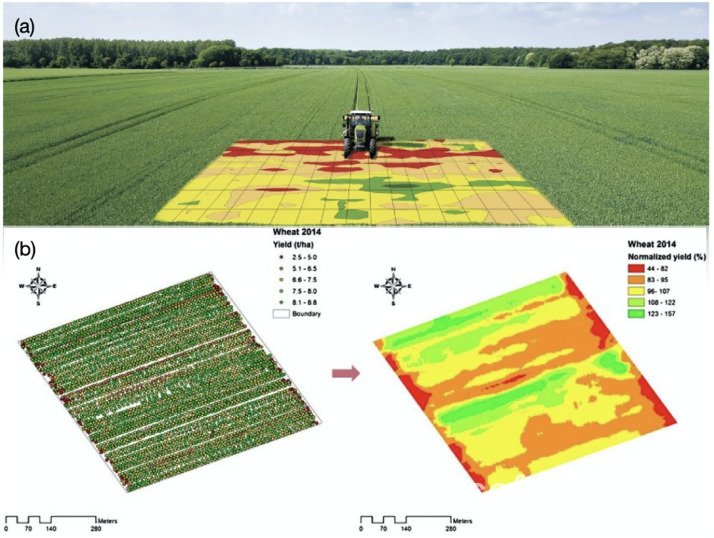In the digital age, visual data has become an integral part of our lives, permeating everything from social media to e-commerce, healthcare, and beyond. However, the sheer volume of images and videos generated daily presents a significant challenge for manual analysis and interpretation. This is where AI image recognition software emerges as a revolutionary solution, enabling accurate and efficient processing of visual data at an unprecedented scale.
Introduction
As businesses and organizations grapple with the ever-increasing deluge of visual information, the need for automated, intelligent systems that can understand and extract insights from images and videos has become crucial. AI image recognition technology harnesses the power of artificial intelligence, particularly computer vision and deep learning, to analyze and interpret visual data with remarkable accuracy and speed.
According to a report by MarketsandMarkets, the global AI image recognition market is projected to grow from $20.2 billion in 2018 to $53.8 billion by 2024, at a Compound Annual Growth Rate (CAGR) of 18.3% during the forecast period.
This explosive growth is driven by the increasing adoption of AI image recognition across diverse industries, from retail and e-commerce to healthcare, automotive, security, and agriculture, as businesses seek to leverage the technology’s potential to gain a competitive edge and unlock new opportunities.
How AI Image Recognition Works
At the core of AI image recognition lies a combination of computer vision techniques and deep learning algorithms, particularly convolutional neural networks (CNNs). These sophisticated neural networks are trained on vast datasets of labeled images, enabling them to learn and recognize patterns, objects, and features within visual data.
The process typically involves the following steps:
- Image preprocessing: The input image is prepared for analysis by resizing, normalizing, and applying filters or transformations as necessary.
- Feature extraction: The CNN extracts meaningful features and patterns from the preprocessed image, such as edges, shapes, textures, and colors.
- Classification and object detection: Based on the extracted features, the CNN classifies the objects or elements within the image, assigning labels or bounding boxes to identify and localize them.
The power of AI image recognition lies in its ability to continuously learn and improve through exposure to more data and training iterations, making it increasingly accurate and versatile over time.
Key Components of AI Image Recognition Systems
Effective AI image recognition systems typically comprise several key components:
- Image preprocessing: This involves techniques such as resizing, cropping, color correction, and noise reduction to prepare the input images for analysis.
- Feature extraction: Algorithms like convolutional neural networks (CNNs) and other deep learning models are used to extract relevant features and patterns from the preprocessed images.
- Classification and object detection: Based on the extracted features, the system classifies objects within the image or detects and localizes specific objects of interest using bounding boxes or segmentation masks.
These components work together to enable AI image recognition systems to accurately identify and classify objects, scenes, faces, and other elements within visual data, opening up a wide range of applications across industries.
Applications of AI Image Recognition
The versatility of AI image recognition technology has led to its widespread adoption across various sectors, revolutionizing the way businesses operate and enabling new opportunities for innovation and efficiency.
Retail and E-commerce
In the retail and e-commerce industries, AI image recognition is used for:
- Product recognition: Enabling customers to search for and identify products by uploading or capturing images, streamlining the shopping experience.
- Inventory management: Automating inventory tracking and monitoring by recognizing products in warehouses and stores.
- Visual search: Allowing users to search for products visually by uploading or capturing images, enhancing the online shopping experience.

Healthcare
In the healthcare sector, AI image recognition plays a crucial role in:
- Medical imaging analysis: Assisting in the detection and diagnosis of diseases by analyzing medical images such as X-rays, CT scans, and MRIs.
- Pathology: Identifying cancerous cells and abnormalities in tissue samples, aiding in early detection and treatment.
- Dermatology: Recognizing skin conditions and lesions, supporting accurate diagnosis and treatment planning.

Automotive and Transportation
In the automotive and transportation sectors, AI image recognition is essential for:
- Self-driving cars: Enabling autonomous vehicles to perceive and interpret their surroundings, including recognizing obstacles, pedestrians, and traffic signs.
- Traffic monitoring: Analyzing traffic patterns and detecting incidents or congestion through video surveillance and image analysis.
- Vehicle inspection: Identifying defects, damages, or irregularities in vehicles during manufacturing or maintenance processes.

Security and Surveillance
In the security and surveillance domain, AI image recognition is used for:
- Facial recognition: Identifying individuals in crowds, at access points, or for law enforcement purposes.
- Anomaly detection: Detecting and alerting authorities to suspicious activities or objects in surveillance footage.
- Access control: Enhancing security by recognizing authorized personnel and restricting access to unauthorized individuals.

Agriculture
In the agricultural sector, AI image recognition is being leveraged for:
- Crop monitoring: Analyzing crop health, detecting pests, diseases, and nutrient deficiencies through aerial or ground-based imagery.
- Yield prediction: Estimating crop yields by analyzing factors such as plant growth, soil conditions, and weather patterns.
- Precision agriculture: Optimizing resource utilization and minimizing waste by identifying areas that require targeted interventions.

These are just a few examples of the wide-ranging applications of AI image recognition technology, demonstrating its potential to transform various industries and drive innovation across multiple sectors.
Real-World Case Studies
To further illustrate the transformative impact of AI image recognition, let’s explore some real-world case studies across various industries:
- Retail and E-commerce: Companies like Amazon and Pinterest have implemented visual search and product recognition capabilities powered by AI image recognition, enabling customers to instantly identify products by uploading or capturing images. This has revolutionized the shopping experience and made product discovery more intuitive and efficient.
- Healthcare: GE Healthcare and IBM Watson Health have developed AI image recognition solutions that assist radiologists in analyzing medical images, improving diagnostic accuracy and efficiency. These solutions can detect and highlight potential abnormalities, streamlining the diagnostic process and enabling earlier intervention.
- Automotive: Companies like Tesla and Waymo are at the forefront of developing self-driving car technology, leveraging AI image recognition to perceive and interpret the vehicle’s surroundings, including detecting pedestrians, traffic signs, and obstacles. This technology is critical for ensuring the safe and reliable operation of autonomous vehicles.
- Security and Surveillance: Companies like Clearview AI and FaceFirst offer facial recognition solutions powered by AI image recognition, enabling law enforcement agencies and private organizations to identify individuals in surveillance footage or monitor access to secure areas.
- Agriculture: Startups like Plantix and Prospera use AI image recognition to analyze crop images and provide insights on plant health, pest and disease detection, and yield predictions. This technology helps farmers optimize their resources, minimize crop losses, and improve overall productivity.
These examples demonstrate the wide-ranging applications and real-world impact of AI image recognition across diverse industries, highlighting its potential to drive innovation, efficiency, and growth.
Challenges and Limitations
Despite its immense potential, the deployment and adoption of AI image recognition technology are not without challenges and limitations. Some of the key challenges include:
Data Quality and Availability
The accuracy and performance of AI image recognition systems heavily rely on the quality and quantity of training data. Insufficient or biased data can lead to inaccurate results, potentially perpetuating existing biases or failing to recognize underrepresented groups or scenarios.
According to a study by Buolamwini and Gebru (2018), some facial recognition systems exhibited higher error rates for darker-skinned individuals, particularly darker-skinned women, highlighting the potential for bias and unfairness in these systems.
Addressing this challenge requires diverse, representative, and high-quality training datasets, as well as ongoing monitoring and adjustment of the models to mitigate biases.
Privacy and Ethical Considerations
The widespread use of AI image recognition, particularly in applications like facial recognition and surveillance, raises significant privacy and ethical concerns. There are valid concerns about the potential misuse of this technology for mass surveillance, profiling, or discrimination.
Clear guidelines, regulations, and ethical frameworks are needed to ensure the responsible development and deployment of AI image recognition technology, balancing its benefits with the protection of individual privacy and civil liberties.
Computational Resources and Scalability
Training and deploying AI image recognition models often require significant computational resources, including powerful hardware (GPUs, TPUs) and large-scale data processing capabilities. As the volume of visual data and the complexity of models increase, scalability becomes a challenge, necessitating efficient distributed computing solutions and cloud infrastructure.
Businesses and organizations must carefully consider the computational requirements and associated costs when adopting AI image recognition technology, ensuring they have the necessary infrastructure and resources to support it effectively.
Future Developments and Trends
The field of AI image recognition is rapidly evolving, with ongoing research and development pushing the boundaries of what’s possible. Some of the key trends and future developments include:
Advancements in Deep Learning Architectures
Researchers are continuously exploring and developing new deep learning architectures, such as transformer models and generative adversarial networks (GANs), to improve the accuracy, efficiency, and robustness of AI image recognition systems. These advancements could lead to more accurate object detection, segmentation, and multi-task learning capabilities.
Edge Computing and Real-Time Processing
With the increasing demand for real-time image analysis and decision-making, there is a growing focus on deploying AI image recognition models on edge devices (e.g., smartphones, embedded systems, and IoT devices). This approach enables low-latency processing and reduces the need for continuous data transmission to the cloud, enhancing privacy and efficiency.
Multimodal AI Systems
Researchers are exploring the integration of AI image recognition with other modalities, such as natural language processing (NLP) and audio analysis, to create multimodal AI systems. These systems can combine visual, textual, and auditory information to provide more comprehensive and contextual understanding, enabling new applications and use cases.
Explainable AI and Interpretability
As AI image recognition systems become more complex and influential, there is a growing demand for explainable AI and interpretability. Researchers are developing techniques to provide insights into the decision-making process of these systems, improving transparency, accountability, and trust.
These emerging trends and developments hold the promise of further enhancing the capabilities and applicability of AI image recognition technology, unlocking new opportunities and driving innovation across various domains.
Conclusion
AI image recognition technology has emerged as a game-changer, revolutionizing the way we process, analyze, and extract insights from visual data. From retail and e-commerce to healthcare, automotive, security, and agriculture, this technology is transforming industries by enabling accurate and efficient image analysis, object detection, and visual data processing.
As businesses and organizations strive to stay competitive and innovative, embracing AI image recognition can provide a significant advantage. However, it is crucial to address the challenges of data quality, privacy, and ethical concerns, as well as computational scalability, to ensure the responsible and sustainable development and deployment of these systems.
With ongoing advancements in deep learning architectures, edge computing, multimodal AI, and explainable AI, the future of AI image recognition is poised to unlock even more powerful and transformative applications, driving innovation and growth across various sectors.
At GetSoftNow.com, we are committed to providing valuable insights and resources on cutting-edge technologies like AI image recognition, empowering our readers to stay informed and make informed decisions about leveraging these powerful tools for their businesses or personal endeavors.
FAQs
What is AI image recognition?
AI image recognition is a technology that uses artificial intelligence, specifically computer vision and deep learning techniques, to analyze and interpret visual data such as images and videos. It enables systems to accurately identify objects, scenes, faces, and other elements within visual data.
How does AI image recognition work?
AI image recognition systems typically use convolutional neural networks (CNNs) that are trained on large datasets of labeled images. The CNNs learn to extract relevant features and patterns from the images, enabling them to classify objects, detect their locations, and assign labels or bounding boxes accordingly.
What are the key applications of AI image recognition?
AI image recognition has a wide range of applications across various industries, including:
- Retail and e-commerce (product recognition, visual search)
- Healthcare (medical imaging analysis, disease detection)
- Automotive (self-driving cars, traffic monitoring)
- Security and surveillance (facial recognition, anomaly detection)
- Agriculture (crop monitoring, yield prediction)
What are the challenges and limitations of AI image recognition?
Some of the key challenges and limitations of AI image recognition include data quality and availability, bias and fairness concerns, privacy and ethical considerations, and computational resources and scalability.
How can businesses leverage AI image recognition technology?
Businesses can leverage AI image recognition technology to gain a competitive edge by improving efficiency, enhancing customer experiences, automating processes, and enabling new data-driven insights. However, it’s crucial to carefully consider the computational requirements, address ethical and privacy concerns, and continuously monitor and adapt the systems to mitigate biases and ensure responsible deployment.

Leave a Reply